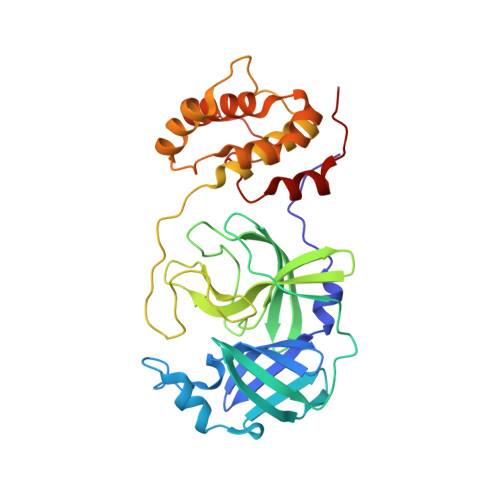Fused-ring structure of decahydroisoquinolin as a novel scaffold for SARS 3CL protease inhibitors
Shimamoto, Y., Hattori, Y., Kobayashi, K., Teruya, K., Sanjoh, A., Nakagawa, A., Yamashita, E., Akaji, K.(2015) Bioorg Med Chem 23: 876-890
- PubMed: 25614110
- DOI: https://doi.org/10.1016/j.bmc.2014.12.028
- Primary Citation of Related Structures:
4TWW, 4TWY, 4WY3 - PubMed Abstract:
The design and evaluation of a novel decahydroisoquinolin scaffold as an inhibitor for severe acute respiratory syndrome (SARS) chymotrypsin-like protease (3CL(pro)) are described. Focusing on hydrophobic interactions at the S2 site, the decahydroisoquinolin scaffold was designed by connecting the P2 site cyclohexyl group of the substrate-based inhibitor to the main-chain at the α-nitrogen atom of the P2 position via a methylene linker. Starting from a cyclohexene enantiomer obtained by salt resolution, trans-decahydroisoquinolin derivatives were synthesized. All decahydroisoquinolin inhibitors synthesized showed moderate but clear inhibitory activities for SARS 3CL(pro), which confirmed the fused ring structure of the decahydroisoquinolin functions as a novel scaffold for SARS 3CL(pro) inhibitor. X-ray crystallographic analyses of the SARS 3CL(pro) in a complex with the decahydroisoquinolin inhibitor revealed the expected interactions at the S1 and S2 sites, as well as additional interactions at the N-substituent of the inhibitor.
Organizational Affiliation:
Department of Medicinal Chemistry, Kyoto Pharmaceutical University, Yamashina-ku, Kyoto 607-8412, Japan.















